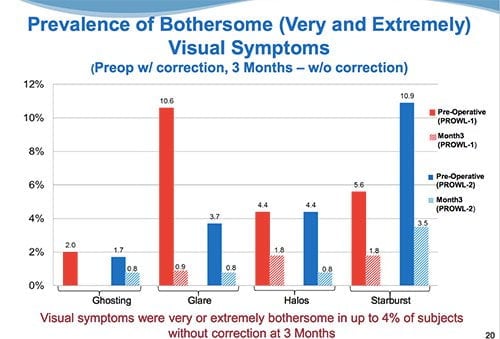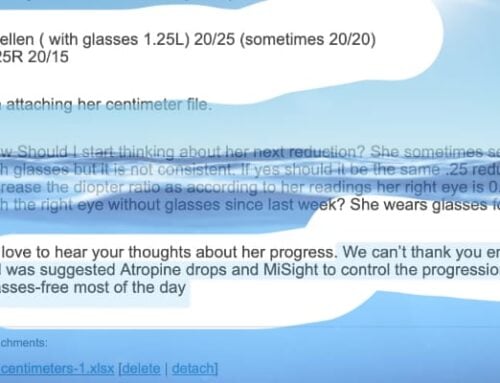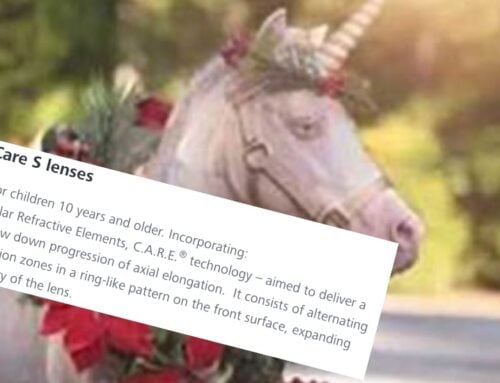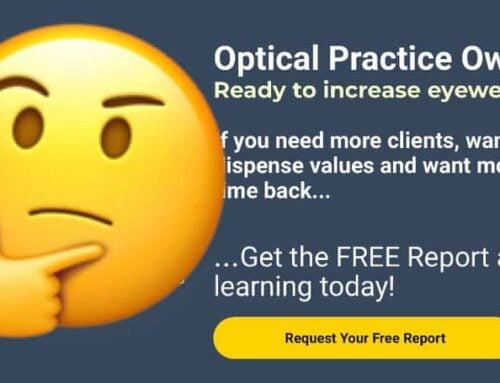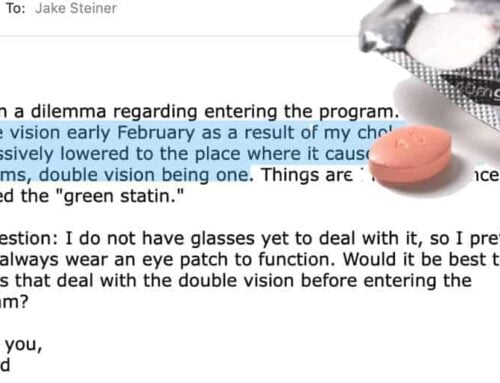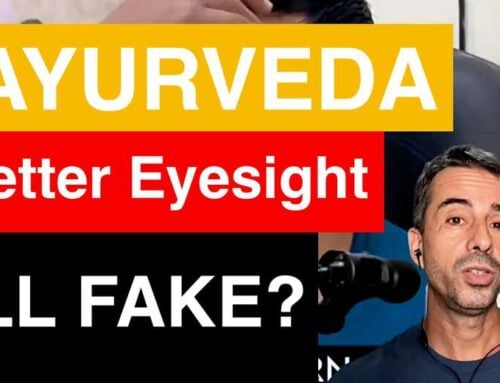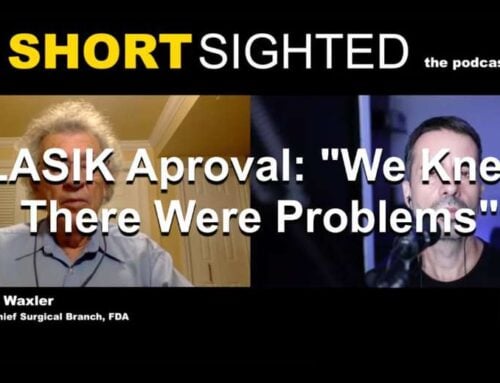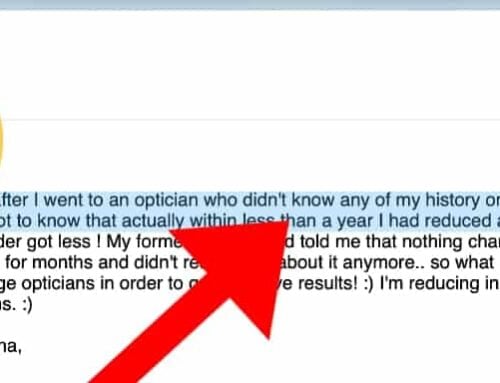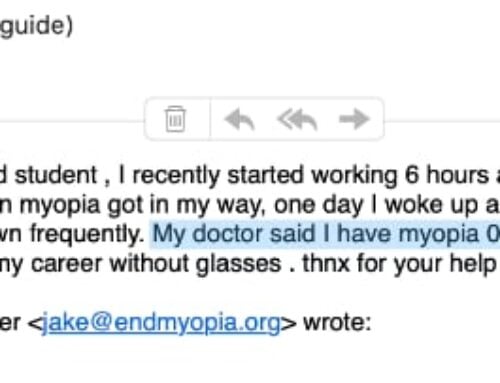Let’s look at the industry trying to sell you laser eye surgery. Here I will briefly show you the quest for profit, the government health agencies reporting significant side effects, and long term complications.
Laser surgery is a very dangerous procedure. Please educate yourself before considering it!
—
When you go looking for laser surgery side effects online, you can find quite a few hair raising potential problem that can arise from laser surgery.
These are glossed over by the high ranking sites like here and here. The problems you can read all over the Web are particularly worrisome since they are all irreversible. If you end up with dry eyes or halos, you will have those for the rest of your life. Is that worth the convenience of vision without lenses?
There are lots of sites covering the commonly known risks of laser surgery. But none of them cover the real problem, that happens even if the surgery goes off without a hitch.
Laser surgery creates an uncorrectable focal plane change.
This is where you really should be concerned. Glasses move the focal plane inside your eye backward, causing the eye to elongate. This axial elongation can lead to retinal detachment (4x risk of retinal detachment for even 1 millimeters of elongation, 10x risk for elongation over 2 millimeters).
Risks when wearing prescription lenses: axial elongation.
When you wear glasses or contact lenses, we can rehabilitate that axial elongation and reduce your risk of retinal detachment (and various other secondary potential eyesight issues).
However, if you get laser surgery, a permanent lens is carved into your eye. We can’t go behind that to reduce that focal plane stimulus. It is now permanently cut into your eye, telling it to grow longer to adjust to the light being focused further back in your eye. Many laser patients experience more myopic growth, and are told to get more surgery later on.
Laser surgery is not in any way a safe and long term viable treatment for myopia!
Lens-induced myopia is well known in medical science. Ask your laser clinic about the risk of lens-induced progressive myopia after surgery. Confirm whether your surgeon even knows about lens-induced myopia! A major red flag should be if you aren’t getting an explicit clear answer showing you that your surgeon knows exactly what you are talking about.
At minimum, the risk of axial elongation and related potential future complication (namely, retinal detachment), should be discussed. If totally swept aside, you should be concerned.
Look at a recent post in the therapist Q&A:
![]() Dear Dr. I had -16 number . 10 years ago i did laser surgery . but now again my number is increasing very fast. now it is -4, i want to decrease the number atleast by 2. doctors are saying as i am 40 years old.anything can not be done at this stage. as my retinas are very very thin after laser surgery. please help me”
Dear Dr. I had -16 number . 10 years ago i did laser surgery . but now again my number is increasing very fast. now it is -4, i want to decrease the number atleast by 2. doctors are saying as i am 40 years old.anything can not be done at this stage. as my retinas are very very thin after laser surgery. please help me”
—
Messages like these are really discouraging. They show how risks are not disclosed to the patient, who is then faced with the very real possibility of losing his/her eyesight.
Laser clinics are focused on generating profit.
Take a look at this article in Eyeworld (magazine of the American Society for Refractive Surgery):
At current typical fees of $2,000 per case, and after all fixed and variable expenses (including marketing and comanagement fees for a portion of cases, but excepting all surgeon’s fees and profits), a 50% profit margin is typical.
Thus, in a 500 case-per-year practice, we would have a revenue rate of $1 million ($2,000/case x 500 cases) and predistribution/preprovider profit of $500,000. That’s a per-case profit of $1,000 (which is why refractive surgery is so alluring at the moment.) However, as fees fall (let’s say to a typical $1,500 in 3 years) and competition increases, resulting in higher marketing costs, the picture changes.
On the revenue side, 500 cases times $1,500 is just $750,000. If core expenses remain the same, at about $500,000, and advertising costs rise just $50,000 to respond to the competition, we would be looking at predistribution profits of $200,000 per year, or about $400 per case.
To put this per-case profitability in context, at current cataract/YAG professional and ambulatory surgical center fees and profit margins, this is nearly 50% lower than what a typical cataract case generates. While the LASIK bubble won’t burst any time soon, you can see that the market will eventually favor just two transaction models, a higher-volume/lower-fee offering, and, for the fortunate few surgeons, a higher-fee/lower-volume premium care model.”
—
You can read the whole article here.
Profit, profit, profit.
None of the advertisements tell you what the FDA (U.S. Food and Drug Administration) discloses on their own government Website about the significant risks of permanent side effects of laser surgery.
Extreme side effects: 4% (!)
Adverse symptoms post-op: almost 50%
and again – huge volume of side effects
All this is from FDA.gov Website, here.
In short, there is no free lunch when it comes to myopia treatment. You either rehabilitate properly by addressing the real causes, or you will very likely suffer long term consequence from any quick fix type of alternative.
You have to take care of the things that matter to you. Eyesight can be very hard to live without. Take care of your eyes!
Om Shanti,
– Neha Gupta
Sources:
IOVS (Investigative Ophthalmology and Visual Science)
http://www.iovs.org/content/47/3/1251.short
Wikipedia
http://en.wikipedia.org/wiki/Myopia#Other_risk_factors
FDA.gov
http://www.fda.gov/downloads/MedicalDevices/ProductsandMedicalProcedures/SurgeryandLifeSupport/LASIK/UCM419443.pdf
Lasik.com
http://www.lasik.com/articles/laser-eye-surgery-what-is-it
Eyeworld
http://www.eyeworld.org/article.php?sid=1651&strict=&morphologic=&query=ophthalmology



